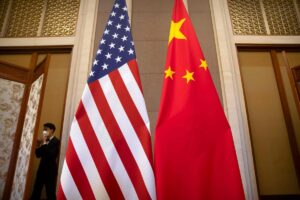Mexico has overtaken China as the leading source of goods imported by the United States, marking a significant shift in trade patterns. Data from the U.S. Commerce Department shows that imports from Mexico increased by nearly 5% to over $475 billion, while imports from China decreased by 20% to $427 billion.

This change reflects escalating tensions between the U.S. and China, prompting efforts to prioritize trade with countries closer to home. The imposition of tariffs on Chinese imports by the Trump administration, continued under President Biden, underscores bipartisan concerns about China’s trade practices.
In response to these challenges, the Biden administration has advocated for strategies like “friend-shoring” to allied countries or bringing manufacturing back to the United States, known as “reshoring.” The COVID-19 pandemic also accelerated the trend of sourcing goods from nearby countries, termed “near-shoring.”

Mexico has benefited from these shifts, with some Chinese manufacturers relocating operations to take advantage of the benefits offered by the U.S.-Mexico-Canada Trade Agreement. Mexican President Andrés Manuel López Obrador sees this trade status as leverage in negotiations with the U.S.
However, the interconnected nature of industries, particularly in sectors like automotive manufacturing, complicates the U.S.-Mexico trade relationship. Derek Scissors, an expert on China, attributes the decline in Chinese imports to concerns over Beijing’s economic policies and crackdowns on foreign companies.

Overall, the narrowing of the U.S. trade deficit signals changing dynamics in global trade and emphasizes the importance of strategic trade partnerships. This underscores the need for flexible supply chains and diversified sourcing strategies to navigate evolving trade landscapes.














































